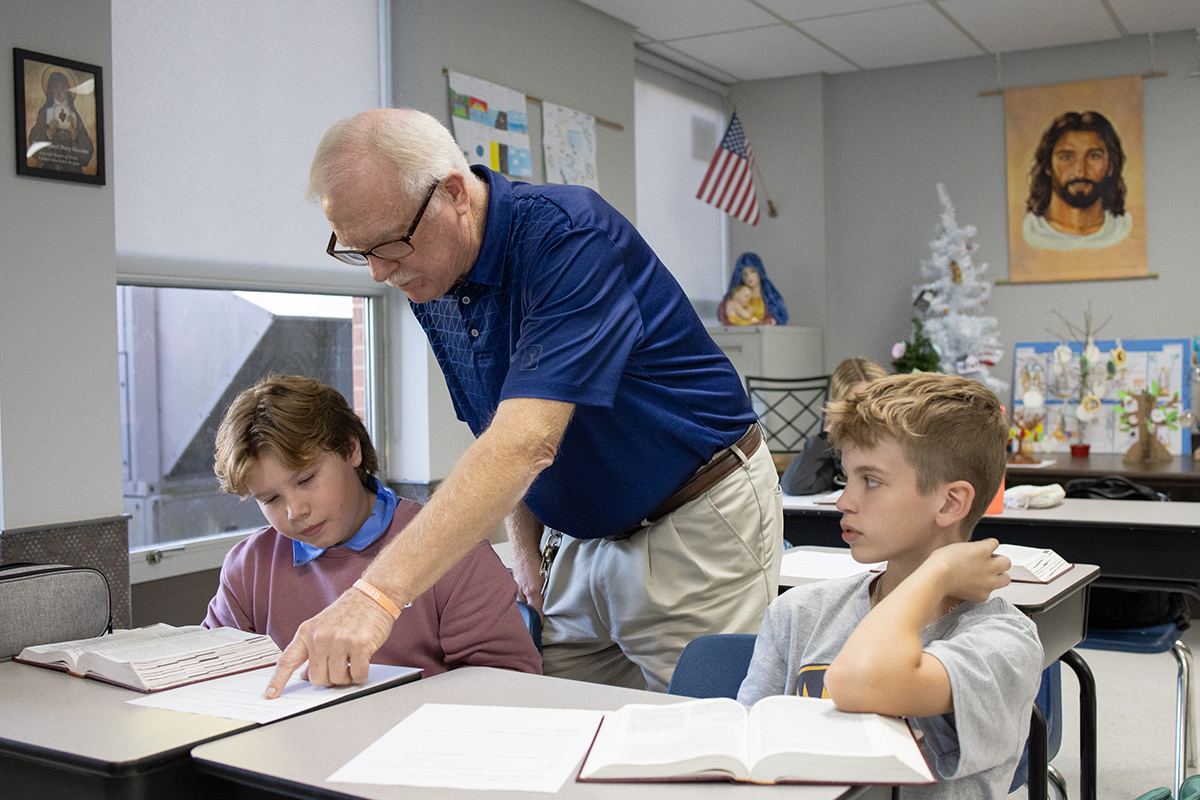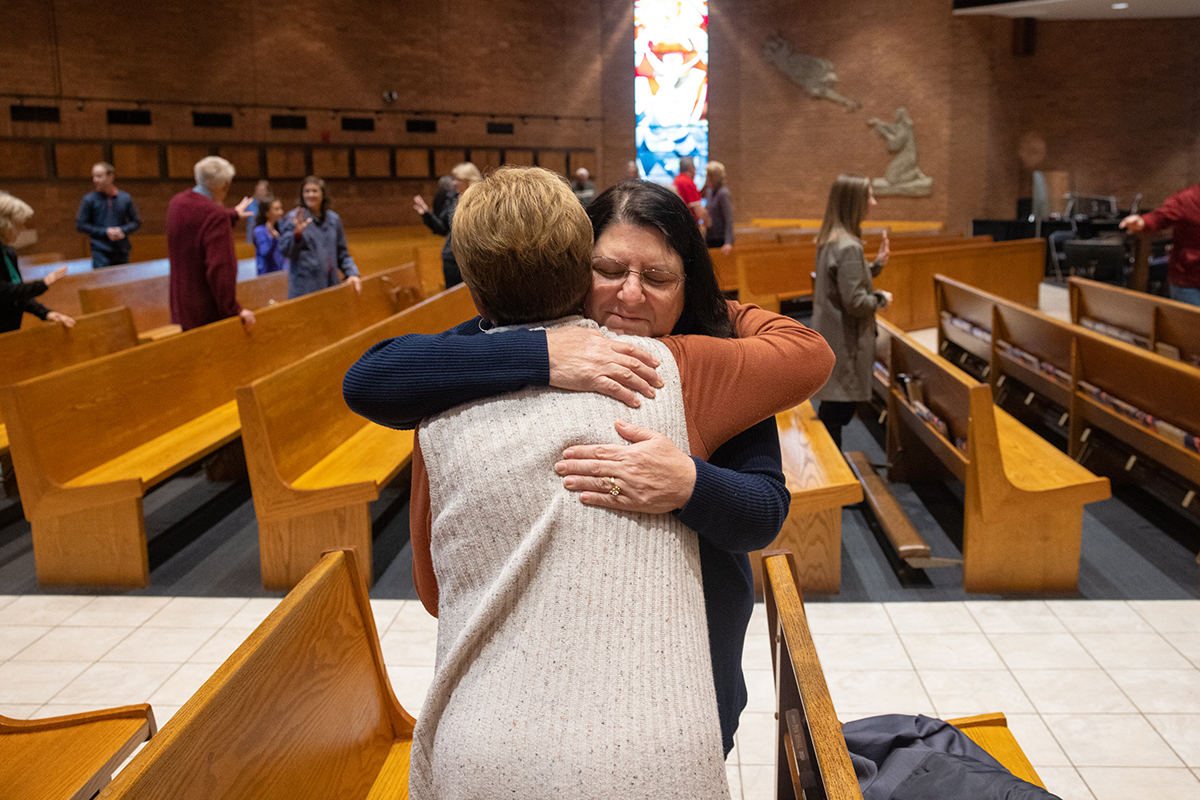Science in the sky: Immaculate Conception Dardenne students launch weather balloon to study atmosphere
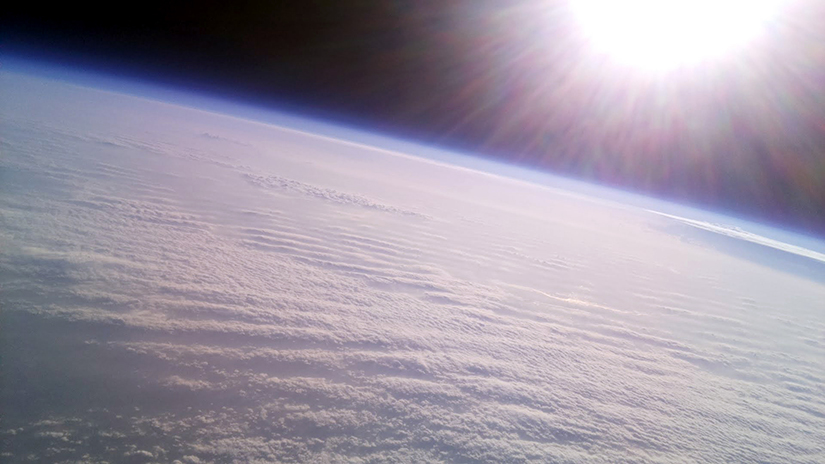
Immaculate Conception Dardenne students launch weather balloon to study atmosphere
A few dozen people stood on the soccer field at Immaculate Conception Parish in Dardenne Prairie on the afternoon of May 6, staring at the sky.
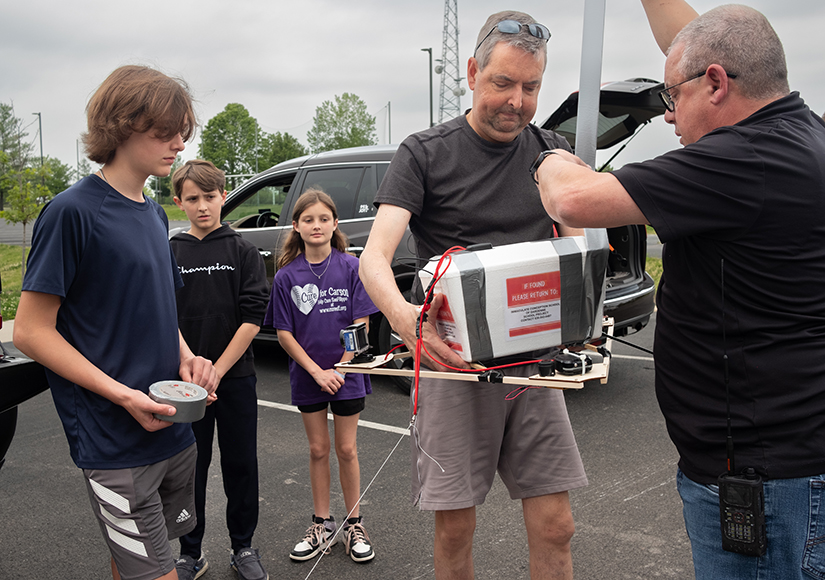
In the distance, a balloon floated higher and higher, until it disappeared from sight. A radio crackled in Andrea Nunziante’s hand: data signals were starting to come in.
The flying object was not an ordinary balloon but a weather balloon, launched into the atmosphere to measure temperature, humidity, air pressure and wind speed at different altitudes.
It was the final project for Nunziante’s eighth-grade Project Lead the Way flight and space unit at Immaculate Conception School. Over the past several weeks, students studied weather patterns and radar to make predictions about the balloon’s journey. With help from Nunziante, the class readied the balloon, attaching sensors and cameras to a triangular frame and programming a Raspberry Pi computer, placed inside a small plastic foam box zip-tied to the frame, to record the data.
“This data will be collected and analyzed by our students in order to gain a better understanding of weather patterns and how they can impact our daily lives,” Nunziante said.
The setup included a radio to send a stream of real-time position, temperature and altitude data over an amateur (ham) radio frequency using technology called the Automatic Packet Reporting System (APRS). Nunziante has been an amateur radio operator for more than 20 years and used a similar setup for a weather balloon project when he previously taught at St. Louis University High School.
Over the course of four hours, the balloon flew as high as 104,000 feet and more than 100 miles east before popping and descending, with the help of an attached parachute, into the top branches of a tall
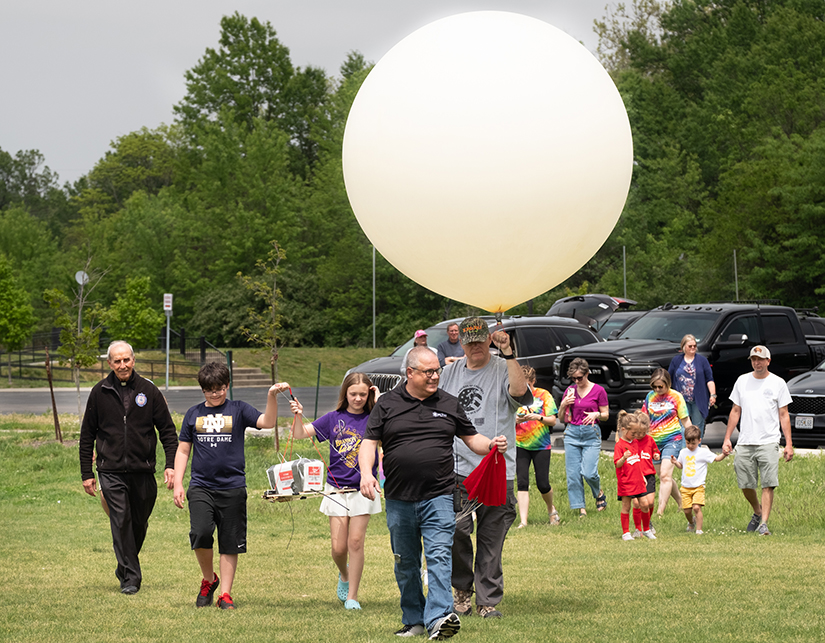
tree near Edgewood, Illinois.
Nunziante, tracking the balloon the whole time, followed its path to retrieve it when it landed, not counting on the tree’s interference. After he was unable to dislodge the contraption — and the property owner was unsuccessful in shooting it down with a bow and arrow — it was finally rescued with the help of some utility line workers, who Nunziante recruited after passing their truck on the road just as he had given up to head home. With the cameras and computer back in his possession, Nunziante retrieved the photos, videos and data log to share with his class and another upper-level science course, which will use the measurements to learn about weather and atmosphere.
Throughout his technology-focused classes, Nunziante brings in the ways that faith and science go hand-in-hand. Learning more about the vastness of the universe during the flight and space unit inspires more wonder and awe about God’s marvelous creation, he said.
“How great is our God, that He made all of this?” he said. “And even after he made all of this, we were His number one creation.”
Eighth-grader Noah Murray is part of the Project Lead the Way class that prepared for the balloon launch. “We did a lot of flight planning, predicting where it’s going to go, graphing and maps,” he said.
Nunziante’s classes have helped Noah develop a love for science and technology that extends outside the classroom; he and his dad, Matt, who also attended the balloon launch, recently built a drone together, among other things.
“We’ve seen some of the pictures other (balloons) have taken from space, and it’s really cool to see just everything that God’s created on earth,” Noah said. “This whole project was just really fun.”
Sixth-grader Maria Morgan came to watch the weather balloon launch. Although she is not in the class that worked on the weather balloon, learning about technology in Nunziante’s sixth-grade class has
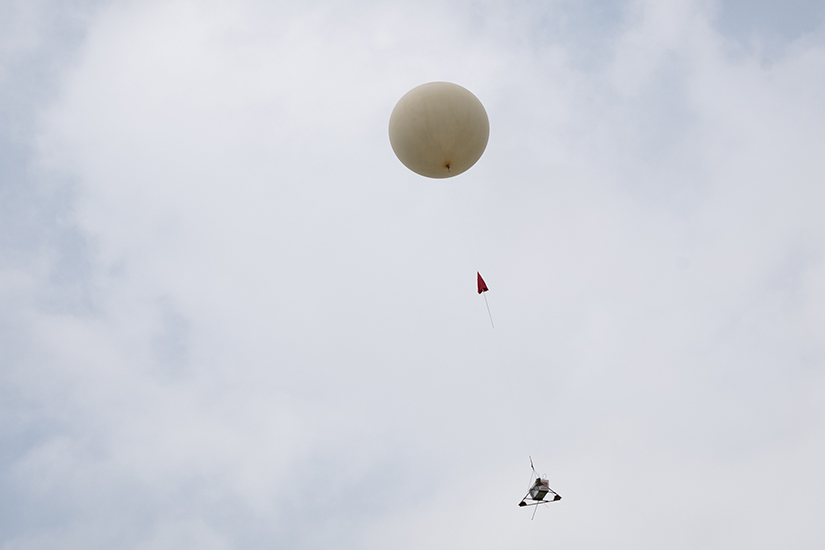
helped her consider “how all of what God created comes together to form our big world,” she said. “He creates all these people, who then help create the technology we have in the world today. It’s really cool.”
Immaculate Conception pastor Msgr. Ted Wojcicki attended the balloon launch to offer a short blessing on its flight before liftoff.
“In 48 years of priesthood, not much is new, but this (balloon blessing) is new,” he said.
Is your class interested in doing a weather balloon project? Andrea Nunziante is happy to help. Contact him at andrea.nunziante@icdschool.org.

A few dozen people stood on the soccer field at Immaculate Conception Parish in Dardenne Prairie on the afternoon of May 6, staring at the sky. Noah Murray and his … Science in the sky: Immaculate Conception Dardenne students launch weather balloon to study atmosphere
Subscribe to Read All St. Louis Review Stories
All readers receive 5 stories to read free per month. After that, readers will need to be logged in.
If you are currently receive the St. Louis Review at your home or office, please send your name and address (and subscriber id if you know it) to subscriptions@stlouisreview.com to get your login information.
If you are not currently a subscriber to the St. Louis Review, please contact subscriptions@stlouisreview.com for information on how to subscribe.


